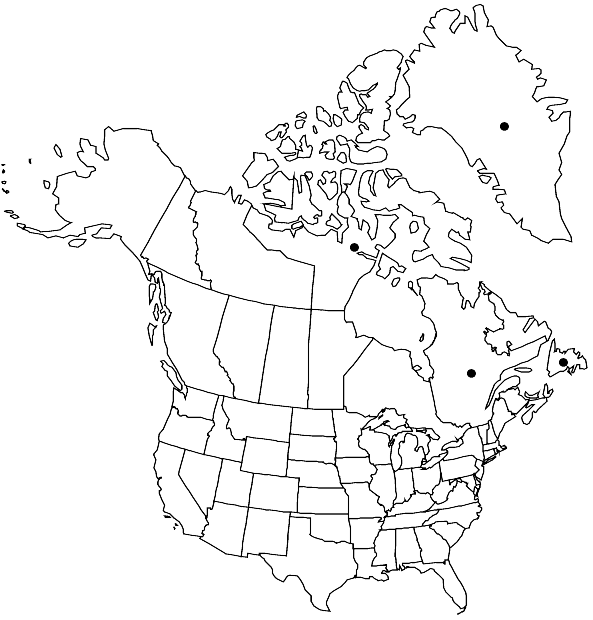Difference between revisions of "Schistidium flexipile"
Eur. Laubm. 1: 563. 1904,.
FNA>Volume Importer |
FNA>Volume Importer |
(No difference)
| |
Revision as of 19:38, 24 September 2019
Plants in compact tufts or mats, (yellow-) green or olivaceous. Stems 1.3–3(–4) cm, central strand weak or absent. Leaves usually curved, often falcate-secund, sometimes erect, imbricate when dry, narrowly ovate-lanceolate, keeled distally, 1.7–2.4 mm, 1-stratose to, rarely, 2-stratose in striae distally; margins usually recurved to apex, smooth, usually 2-stratose, sometimes 1-stratose or multistratose; apices acute or sub-obtuse; costa percurrent or excurrent as a smooth or weakly denticulate, usually non-decurrent, flexuose awn, sometimes embracing part of the lamina, smooth; basal marginal cells quadrate or short-rectangular; distal laminal cells quadrate or short-rectangular, 8–10 µm wide, smooth, sinuose. Sexual condition autoicous. Capsule orange-brown or red-brown, short-cylindric to cylindric, 0.8–1.3 mm; exothecial cells usually a mix of isodiametric, short-elongate, and oblate cells, thin-walled, walls often curved, usually trigonous; stomata present; peristome recurved to squarrose-recurved, sometimes twisted, 260–430 µm, orange or reddish orange, weakly papillose, usually strongly perforated. Spores 11–17 µm, granulose.
Phenology: Capsules mature late spring to early summer.
Habitat: Dry to seasonally moist rocks and ledges
Elevation: low to moderate elevations (0-500 m)
Distribution

Greenland, Nfld. and Labr. (Nfld.), Nunavut, Que., Eurasia.
Discussion
The falcate, often distally secund leaves as well as the green color readily characterize Schistidium flexipile. Its short, narrow, and smooth-margined leaves also help to distinguish is from the closely related S. apocarpum.
Selected References
None.